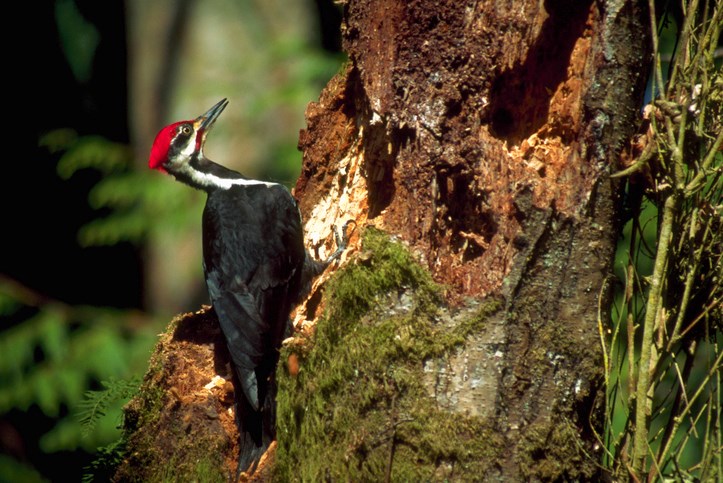In receiving comments from readers of this column, a frequent topic is the pileated woodpecker. This large, black-backed bird is crow-sized with a very prominent, elongated red crest atop its head, from which is derived the word pileated (“having a crest covering the pileum”). It is the largest woodpecker species in North America and very nearly the world. It is a close relative of the unfortunate ivory-billed woodpecker, which is now officially declared extinct, and was a resident of south-eastern USA swamps. Pileated woodpeckers, on the other hand, seem to be faring very well on the Sunshine Coast, likely because of the prevalence of low elevation mature-sized alder snags, after disturbance of the coniferous forest by logging and settlement. They are a charismatic member of our local bird fauna and are the model for Woody Woodpecker, created by the cartoonist Walter Lanz.
Many people have never encountered a pileated woodpecker, until they discover one on a forest trail, or maybe receive a visit in their garden. However, the species is fairly common at low elevations. Despite not observing the bird in the flesh, they are very evident from the large rectangular holes they excavate in diseased, damaged or decaying trees. Piles of woodchips beneath a tree are also an indicator, and if you are lucky you may see the excavation in progress, and it literally might seem to be a chain saw at work. Alder is the main species of interest, but they also excavate hemlocks and damaged red cedars. Woodpeckers can hear bugs, grubs and ants within diseased or decaying trees and the fact that the woodpecker has zeroed in on a tree indicates pathology. Their main food items are grubs and ants. The cavities excavated by pileated woodpeckers for both food and nest sites are later used by secondary cavity nesters.
Another method of detecting pileated woodpeckers is by their calls. This is a very loud, persistent note that may be confused with that of a flicker and, if disturbed, they will make this call as they fly away. One year, a pileated pair decided to nest in a decaying alder that was only 10 metres away from my house. I was delighted with this visitation until the young birds hatched, and was then subjected to a deafening screech for food that persisted from morning ‘till night for about three weeks until they fledged. The adult birds can also be detected by their loud excavations on trees, and by territorial drumming in the springtime.
To report your sightings or questions contact [email protected] or 885-5539. Good Birding.



